 Search by Keyword
|
“I ME MINE”
(George Harrison)
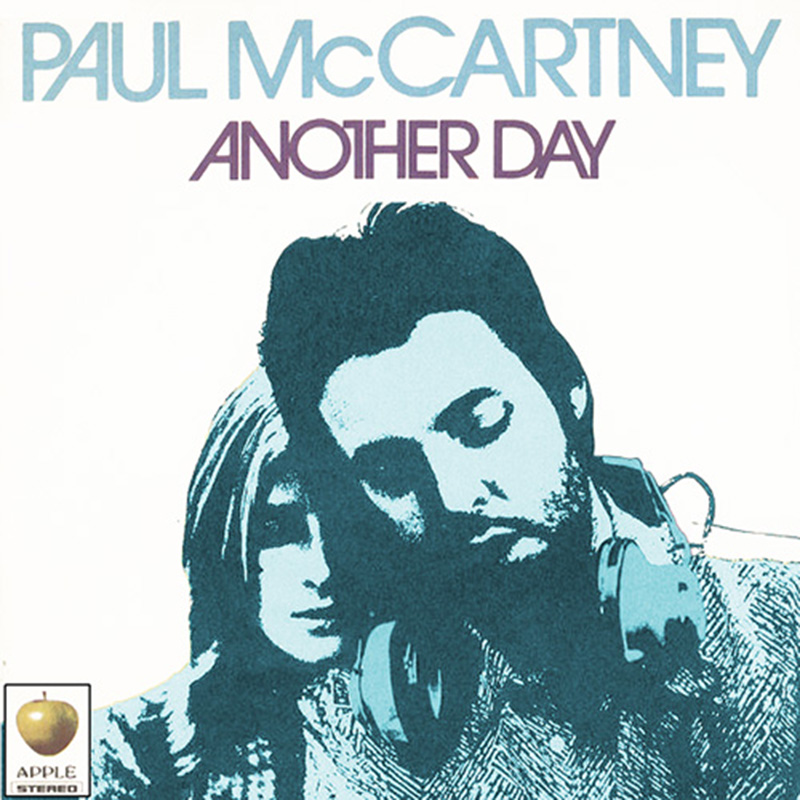 During the rehearsals and recording sessions that resulted in the “Let It Be” album and film, George Harrison appeared equally prolific as a songwriter among his fellow band members. McCartney was at his peak as a composer at this time, always having a plethora of songs he was working on with a choice of which he felt compelled to finalize at any given moment, choosing to hold onto to some for an undisclosed future date. He actually had many at this time that he waited to develop until his solo career, such selections as “The Back Seat Of My Car,” “Teddy Boy” and “Another Day” among others. Lennon, on the other hand, was much occupied with other events at the time and distracted by his newfound relationship with Yoko and his addiction to heroin. He, nonetheless, scraped together some noteworthy new compositions to contribute, as well as dredging up some oldies to fit the bill. During the rehearsals and recording sessions that resulted in the “Let It Be” album and film, George Harrison appeared equally prolific as a songwriter among his fellow band members. McCartney was at his peak as a composer at this time, always having a plethora of songs he was working on with a choice of which he felt compelled to finalize at any given moment, choosing to hold onto to some for an undisclosed future date. He actually had many at this time that he waited to develop until his solo career, such selections as “The Back Seat Of My Car,” “Teddy Boy” and “Another Day” among others. Lennon, on the other hand, was much occupied with other events at the time and distracted by his newfound relationship with Yoko and his addiction to heroin. He, nonetheless, scraped together some noteworthy new compositions to contribute, as well as dredging up some oldies to fit the bill.
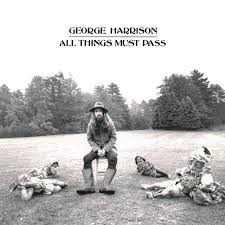 Luckily, George Harrison showed himself to be at his peak as a composer. There were a total of fifteen songs that he offered up to The Beatles for consideration in January 1969, the single month that the group rehearsed and recorded (for the most part) what became the released “Let It Be” album. “Something” and "Old Brown Shoe" were saved for later Beatles releases, and some surfaced on his first solo album after the demise of The Beatles, “All Things Must Pass.” There were others as well, such as “Window Window,” “Get Your Rocks Off,” “How Do You Tell Someone,” “It Is Discovered,” “Maureen” and “Ramblin' Woman” (some of which are only presumed titles) that never saw the light of day at any point. Luckily, George Harrison showed himself to be at his peak as a composer. There were a total of fifteen songs that he offered up to The Beatles for consideration in January 1969, the single month that the group rehearsed and recorded (for the most part) what became the released “Let It Be” album. “Something” and "Old Brown Shoe" were saved for later Beatles releases, and some surfaced on his first solo album after the demise of The Beatles, “All Things Must Pass.” There were others as well, such as “Window Window,” “Get Your Rocks Off,” “How Do You Tell Someone,” “It Is Discovered,” “Maureen” and “Ramblin' Woman” (some of which are only presumed titles) that never saw the light of day at any point.
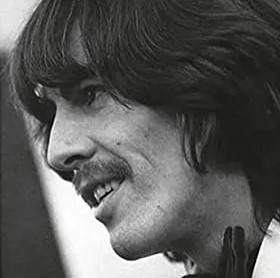 George Harrison proved that he indeed had much to offer as a songwriter as The Beatles were ending their career as a group. Two of his compositions, “I Me Mine” and “For You Blue,” eventually received enough attention from his other bandmates to appear on the “Let It Be” album. George Harrison proved that he indeed had much to offer as a songwriter as The Beatles were ending their career as a group. Two of his compositions, “I Me Mine” and “For You Blue,” eventually received enough attention from his other bandmates to appear on the “Let It Be” album.
Songwriting History
“I Me Mine” was written by George on January 7th, 1969, at his "Kinfauns" home in Esher, Surrey. The Beatles had just begun rehearsals at Twickenham Film Studios on January 2nd for what would eventually become the “Let It Be” project and, with a need for new material, George came up with a new contender.
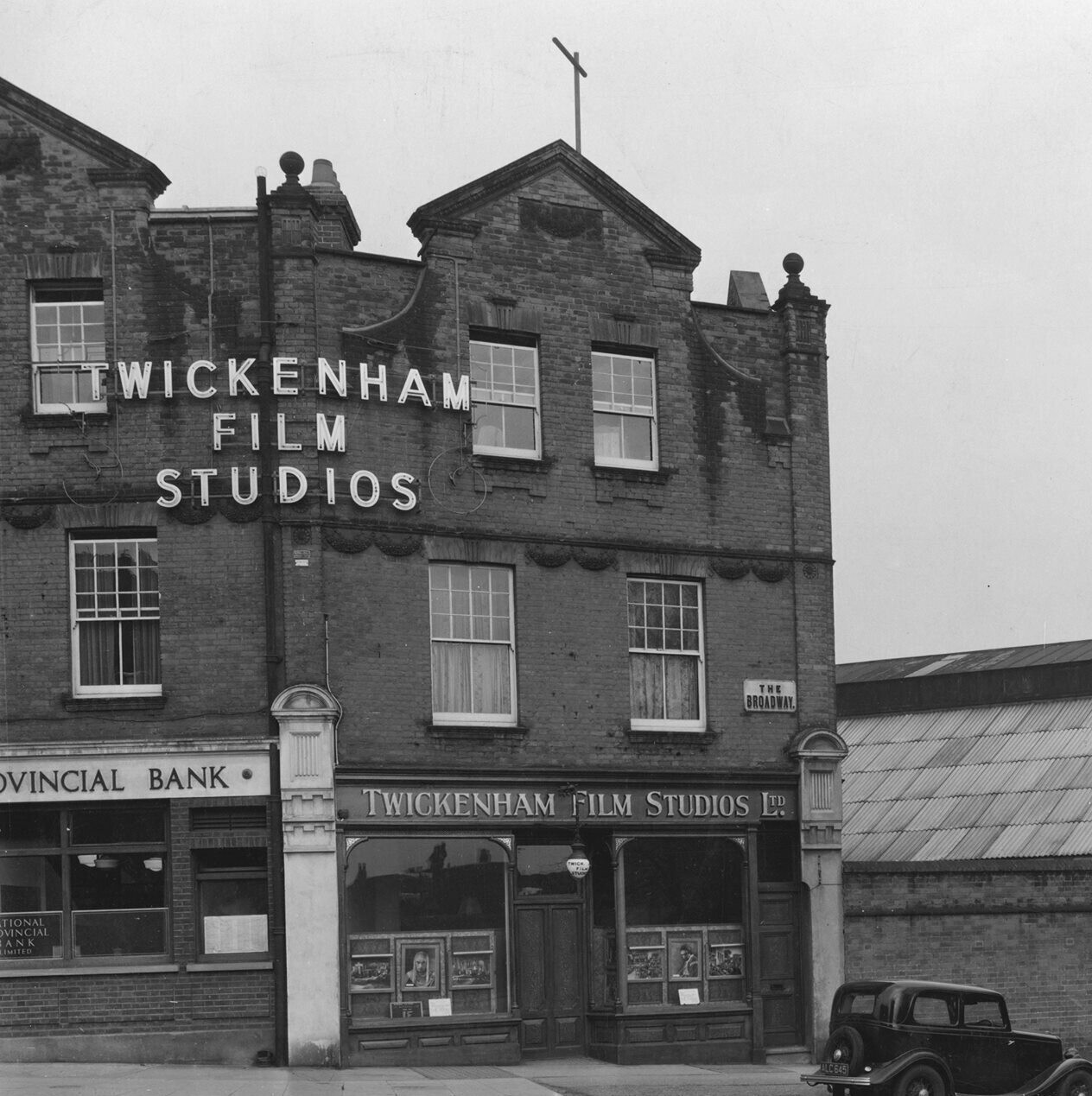 He introduced the song to Ringo and director Michael Lindsay-Hogg the following day at Twickenham Film Studios, their fifth day of rehearsals for the project, saying to Lindsay-Hogg, “'I Me Mine' it's called. Should I sing it to you? I don't, I don't care if you don't want it. I don't give a sh*t about it. I don't give a f*ck if it's going in the 'musical.'” George's attitude about songwriting at this point was not so much about whether it would be accepted by the rest of The Beatles or not, since the majority of his compositions received half-hearted cooperation from the others anyway. “To me they're just songs,” he told David Wigg later that year, “and I just write them and some will be considered as good by maybe the masses and some won't. But to me they're just songs, things that are there that have to be got out.” He introduced the song to Ringo and director Michael Lindsay-Hogg the following day at Twickenham Film Studios, their fifth day of rehearsals for the project, saying to Lindsay-Hogg, “'I Me Mine' it's called. Should I sing it to you? I don't, I don't care if you don't want it. I don't give a sh*t about it. I don't give a f*ck if it's going in the 'musical.'” George's attitude about songwriting at this point was not so much about whether it would be accepted by the rest of The Beatles or not, since the majority of his compositions received half-hearted cooperation from the others anyway. “To me they're just songs,” he told David Wigg later that year, “and I just write them and some will be considered as good by maybe the masses and some won't. But to me they're just songs, things that are there that have to be got out.”
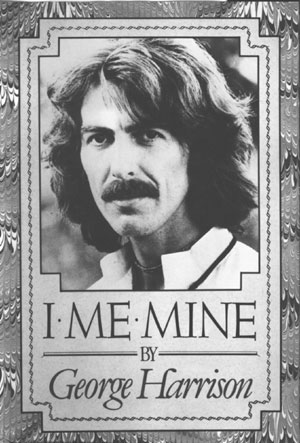 In this case, as with many other songs he had written around this time, a deep philosophical and spiritual meaning lies just beneath the surface. In his 1979 book entitled “I Me Mine,” George explains: “I suppose having LSD was like someone catapulting me out into space. The LSD experience was the biggest experience that I'd had up until that time...after one dose of acid I felt I was stuck in this thing, which later I realized is called 'relativity.' So, the big 'I' I'm talking about is the absolute, whereas we're in the relative where everything is good/bad, yes/no, up/down, black/white. That's why they called it the heaven and hell drug! But life is heaven and hell, we see it as, or make it into hell or heaven; there's no heaven or hell beyond relativity. So suddenly, I looked around and everything I could see was relative to my ego – like, 'That's my piece of paper,' and 'That's my flannel,' or, 'Give it to me,' or 'I am.' It drove me crackers; I hated everything about my ego – it was a flash of everything false and impermanent which I disliked.” In this case, as with many other songs he had written around this time, a deep philosophical and spiritual meaning lies just beneath the surface. In his 1979 book entitled “I Me Mine,” George explains: “I suppose having LSD was like someone catapulting me out into space. The LSD experience was the biggest experience that I'd had up until that time...after one dose of acid I felt I was stuck in this thing, which later I realized is called 'relativity.' So, the big 'I' I'm talking about is the absolute, whereas we're in the relative where everything is good/bad, yes/no, up/down, black/white. That's why they called it the heaven and hell drug! But life is heaven and hell, we see it as, or make it into hell or heaven; there's no heaven or hell beyond relativity. So suddenly, I looked around and everything I could see was relative to my ego – like, 'That's my piece of paper,' and 'That's my flannel,' or, 'Give it to me,' or 'I am.' It drove me crackers; I hated everything about my ego – it was a flash of everything false and impermanent which I disliked.”
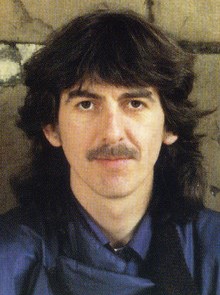 “But later I learnt from it: to realize that there is somebody else in here apart from old blabbermouth (that's what I felt like – I hadn't seen or heard or done anything in my life, and yet I hadn't stopped talking). 'Who am I?' became the order of the day. Anyway that's what came out of it: 'I Me Mine.' The truth within us has to be realized: when you realize that everything else that you see and do and touch and smell isn't real, then you may know what reality is, and can answer the question 'Who am I?'” “But later I learnt from it: to realize that there is somebody else in here apart from old blabbermouth (that's what I felt like – I hadn't seen or heard or done anything in my life, and yet I hadn't stopped talking). 'Who am I?' became the order of the day. Anyway that's what came out of it: 'I Me Mine.' The truth within us has to be realized: when you realize that everything else that you see and do and touch and smell isn't real, then you may know what reality is, and can answer the question 'Who am I?'”
 George elaborated even further in the “Beatles Anthology” book: “'I Me Mine' is the ego problem. There are two 'I's: the little 'i' when people say, 'I am this, and the big 'I” - i.e. 'Om,' the complete, whole, universal consciousness that is void of duality and ego. There is nothing that isn't part of the complete whole. When the little 'i' merges into the big 'I' then you are really smiling!" George elaborated even further in the “Beatles Anthology” book: “'I Me Mine' is the ego problem. There are two 'I's: the little 'i' when people say, 'I am this, and the big 'I” - i.e. 'Om,' the complete, whole, universal consciousness that is void of duality and ego. There is nothing that isn't part of the complete whole. When the little 'i' merges into the big 'I' then you are really smiling!"
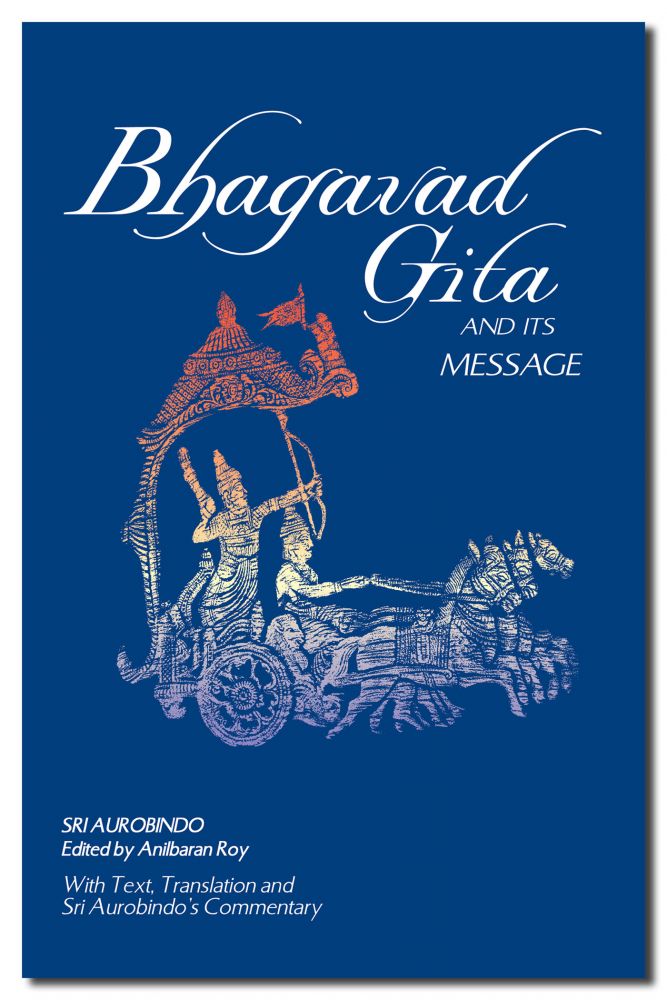 In the Hindu holy book Bhagavad Gita, the following verse is found: "They are forever free who renounce all selfish desires and break away from the ego-cage of I-me-mine, to be united with the Lord. This is the supreme state; attain to this and pass from death to immortality." George was very familiar with this Hindu text and was an avid reader and student of all things Eastern. "I kept coming across the words 'I, me and mine" in books about Yoga and stuff. I mean, and about the meaning of life and the difference between the ego and the soul, the real you and the 'you' that people mistake their identity to be. This bag of flesh and bones and the ego. And that's really it. 'I, me and mine' is all ego orientation. It's something that is used all the time.” In the Hindu holy book Bhagavad Gita, the following verse is found: "They are forever free who renounce all selfish desires and break away from the ego-cage of I-me-mine, to be united with the Lord. This is the supreme state; attain to this and pass from death to immortality." George was very familiar with this Hindu text and was an avid reader and student of all things Eastern. "I kept coming across the words 'I, me and mine" in books about Yoga and stuff. I mean, and about the meaning of life and the difference between the ego and the soul, the real you and the 'you' that people mistake their identity to be. This bag of flesh and bones and the ego. And that's really it. 'I, me and mine' is all ego orientation. It's something that is used all the time.”
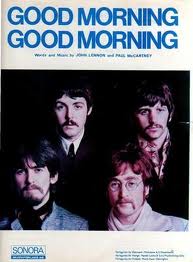 “It's a heavy waltz,” George explained to Michael Lindsay-Hogg and Ringo on January 8th, 1969 when he was premiering the song to them while playing John's Epiphone Casino guitar. Similar to John Lennon finding inspiration from watching television, evidenced in "Good Morning, Good Morning" and "Cry Baby Cry," George revealed to them a similar experience from the previous night. "It was the TV, you see," George explained, "that science fiction thing (referring to an episode of "Out Of The Unknown: Immortality Inc."), but then it suddenly turned into that crap about medals and things. That's what gave me the idea. Suddenly it was the bit where they were all coming into the ball. I think it was Austria, and they all had their medals. And there was some music that was just playing...like a 3/4 thing. Some things like that happen where you just hear something, and it registers in your head as something else. And so I just had it my head, just the waltz thing, and it was fitting...It's like one of those things where they're all swaying!" “It's a heavy waltz,” George explained to Michael Lindsay-Hogg and Ringo on January 8th, 1969 when he was premiering the song to them while playing John's Epiphone Casino guitar. Similar to John Lennon finding inspiration from watching television, evidenced in "Good Morning, Good Morning" and "Cry Baby Cry," George revealed to them a similar experience from the previous night. "It was the TV, you see," George explained, "that science fiction thing (referring to an episode of "Out Of The Unknown: Immortality Inc."), but then it suddenly turned into that crap about medals and things. That's what gave me the idea. Suddenly it was the bit where they were all coming into the ball. I think it was Austria, and they all had their medals. And there was some music that was just playing...like a 3/4 thing. Some things like that happen where you just hear something, and it registers in your head as something else. And so I just had it my head, just the waltz thing, and it was fitting...It's like one of those things where they're all swaying!"
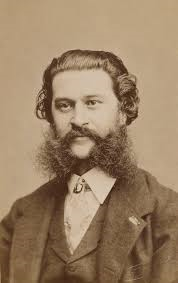 What George was referring to was a weekly BBC program entitled "Europa," the episode that aired on January 7th, 1969 being called "The Titled And The Unentitled." This episode discussed, as the original TV listing described, "looks at the aspects of pomp and circumstance through European eyes, with a special report from French Television on the investiture this summer of the Prince Of Wales." Discussions of the medals given out appeared as "crap" to George, but the music being played in the background sparked his interest. The piece of music being played sometime between 9:55 and 10:25 pm of this broadcast that evening was "Kaiser-Walzer" by Johann Strauss II. Therefore, notwithstanding references to Beethoven and Tchaikovsky in the Chuck Berry classic from the "With The Beatles" album back in 1963, it was actually the classical composer Strauss that inspired George to write a Beatles song. What George was referring to was a weekly BBC program entitled "Europa," the episode that aired on January 7th, 1969 being called "The Titled And The Unentitled." This episode discussed, as the original TV listing described, "looks at the aspects of pomp and circumstance through European eyes, with a special report from French Television on the investiture this summer of the Prince Of Wales." Discussions of the medals given out appeared as "crap" to George, but the music being played in the background sparked his interest. The piece of music being played sometime between 9:55 and 10:25 pm of this broadcast that evening was "Kaiser-Walzer" by Johann Strauss II. Therefore, notwithstanding references to Beethoven and Tchaikovsky in the Chuck Berry classic from the "With The Beatles" album back in 1963, it was actually the classical composer Strauss that inspired George to write a Beatles song.
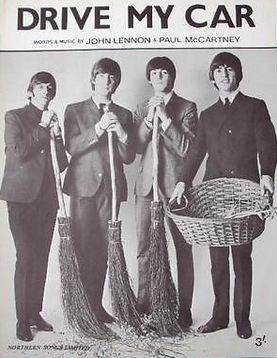 As witnessed in the “Let It Be” movie, George's original idea included a shift into a flamenco-style guitar break, which at the time met with John's disapproval. "We're a rock and roll band, you know," Lennon complained on that day, as seen in Peter Jackson's "Get Back" series. Paul suggested an additional element be added to the song between the waltz verse and the flamenco guitar break, saying: "That sounds like it would be a good rock bit, it gets out of the idea of a waltz." A 12-bar blues segment, which changed the song from a minor key in the verses to a major key, was thereby written on the spot, with a bit of lyrical harmony thrown in from George and Paul. "Just do it like a 'beep beep' harmony," Paul suggests, referring to their vocalizations in "Drive My Car." The harmonized lyrics on this day changed from "my my my" to "my my, me me, mine" (preferred by Paul) and then "I I, me me, mine" (at George's insistence). As witnessed in the “Let It Be” movie, George's original idea included a shift into a flamenco-style guitar break, which at the time met with John's disapproval. "We're a rock and roll band, you know," Lennon complained on that day, as seen in Peter Jackson's "Get Back" series. Paul suggested an additional element be added to the song between the waltz verse and the flamenco guitar break, saying: "That sounds like it would be a good rock bit, it gets out of the idea of a waltz." A 12-bar blues segment, which changed the song from a minor key in the verses to a major key, was thereby written on the spot, with a bit of lyrical harmony thrown in from George and Paul. "Just do it like a 'beep beep' harmony," Paul suggests, referring to their vocalizations in "Drive My Car." The harmonized lyrics on this day changed from "my my my" to "my my, me me, mine" (preferred by Paul) and then "I I, me me, mine" (at George's insistence).
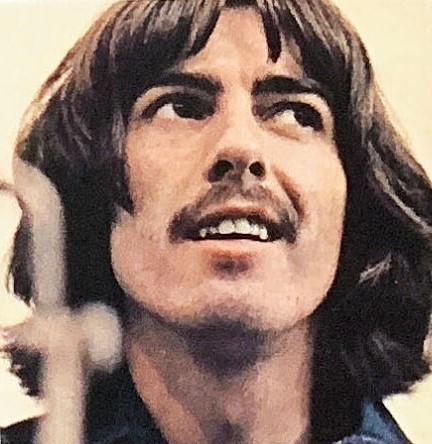 The melody, lyrics and arrangement of "I Me Mine" were solidified on this day, evidenced by the officially released version of the song as recorded in January of 1970. Paul's suggestions noted above, these being the addition of a rocking 12-bar blues-style section and the "beep beep"-like vocals, are evidence of an uncredited co-writing of "I Me Mine" with George Harrison. The melody, lyrics and arrangement of "I Me Mine" were solidified on this day, evidenced by the officially released version of the song as recorded in January of 1970. Paul's suggestions noted above, these being the addition of a rocking 12-bar blues-style section and the "beep beep"-like vocals, are evidence of an uncredited co-writing of "I Me Mine" with George Harrison.
Recording History
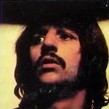 As detailed above, George brought his newly written song “I Me Mine” into Twickenham Film Studios on January 8th, 1969, and demonstrated the song to Ringo, Michael Lindsay-Hogg and others standing around. He sang the words from a handwritten lyric sheet while playing it on Lennon's Epiphone Casino guitar at the beginning of the day's rehearsal before John or Paul had arrived. A segment of this introduction is featured in the “Let It Be” film, a seated Ringo aggressively clapping his hands in a 3/4 rhythm when George explaines that the song was “a heavy waltz.” As detailed above, George brought his newly written song “I Me Mine” into Twickenham Film Studios on January 8th, 1969, and demonstrated the song to Ringo, Michael Lindsay-Hogg and others standing around. He sang the words from a handwritten lyric sheet while playing it on Lennon's Epiphone Casino guitar at the beginning of the day's rehearsal before John or Paul had arrived. A segment of this introduction is featured in the “Let It Be” film, a seated Ringo aggressively clapping his hands in a 3/4 rhythm when George explaines that the song was “a heavy waltz.”
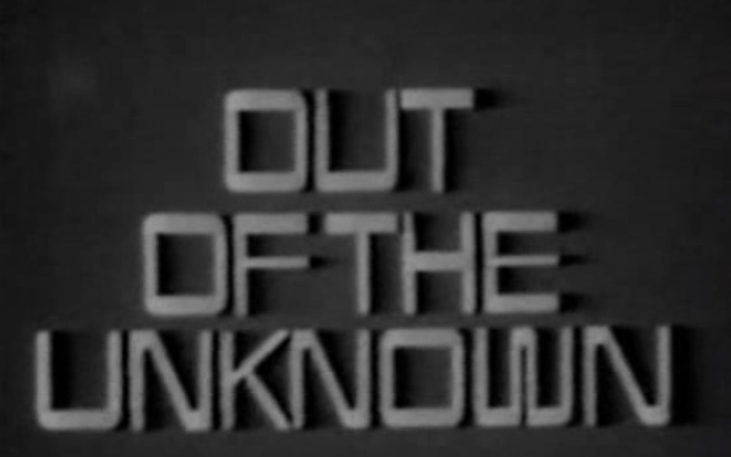 At this point, the song consisted of verses and the above-mentioned flamenco-style bridge, although the lyrics to the verses are as we've come to know them on the finished recording. He interupts himself during this demo to explain his inspiration for the song from the previous night's TV show, as related above, which then moves into a detailed discussion between George and Ringo about the science fiction show “Out Of The Unknown” that also aired that evening. Paul then arrives, which leads to George introducing the song to him as well. At this point, the song consisted of verses and the above-mentioned flamenco-style bridge, although the lyrics to the verses are as we've come to know them on the finished recording. He interupts himself during this demo to explain his inspiration for the song from the previous night's TV show, as related above, which then moves into a detailed discussion between George and Ringo about the science fiction show “Out Of The Unknown” that also aired that evening. Paul then arrives, which leads to George introducing the song to him as well.
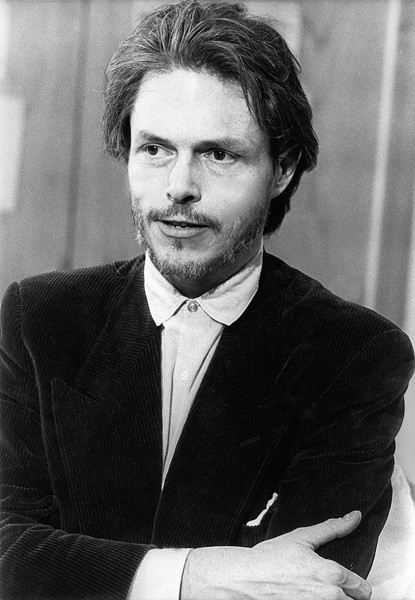 Always wanting to bounce songwriting ideas off of his fellow Beatles, he asks Paul, “Is that gramatical? 'Flowing more freely than wine...Flowing much freer?' If there were such a word as 'freer,' is it 'fr-e-e-e-r?'” Michael Lindsay-Hogg suggests “f-r-e-r,” to which Paul adds, “It's like 'queer.'” "I Me Mine" was then dropped for approximately the next two hours as The Beatles rehearsed many other songs after John arrived. Always wanting to bounce songwriting ideas off of his fellow Beatles, he asks Paul, “Is that gramatical? 'Flowing more freely than wine...Flowing much freer?' If there were such a word as 'freer,' is it 'fr-e-e-e-r?'” Michael Lindsay-Hogg suggests “f-r-e-r,” to which Paul adds, “It's like 'queer.'” "I Me Mine" was then dropped for approximately the next two hours as The Beatles rehearsed many other songs after John arrived.
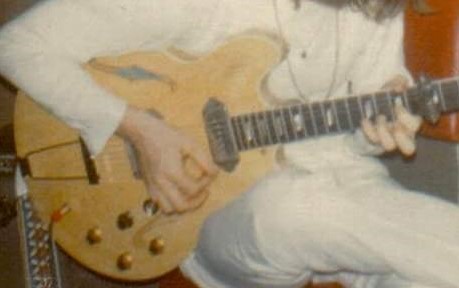 George then worked up his nerve to suggest that his band-mates learn and rehearse his new composition. “Would you like to learn a new one? Very simple,” he asks John who wasn't there when he presented it to Paul and Ringo. After getting somewhat acclimated with it, John clowns around on guitar during a couple runthroughs, asserting his dissaproval of the waltz beat and mockingly suggesting that he play a barrel organ on the song. Since Paul owned an accordian, the bassist thought to put it to good use by making the serious suggestion, “Want the accordian?” George appears to consider this but, since the instrument wasn't at Twickenham Studios on that day, replies, “If it's not here, then just f*ck it.” George also voiced an idea to have a stand-up acoustic bass on the song, although this never came to fruition either. George then worked up his nerve to suggest that his band-mates learn and rehearse his new composition. “Would you like to learn a new one? Very simple,” he asks John who wasn't there when he presented it to Paul and Ringo. After getting somewhat acclimated with it, John clowns around on guitar during a couple runthroughs, asserting his dissaproval of the waltz beat and mockingly suggesting that he play a barrel organ on the song. Since Paul owned an accordian, the bassist thought to put it to good use by making the serious suggestion, “Want the accordian?” George appears to consider this but, since the instrument wasn't at Twickenham Studios on that day, replies, “If it's not here, then just f*ck it.” George also voiced an idea to have a stand-up acoustic bass on the song, although this never came to fruition either.
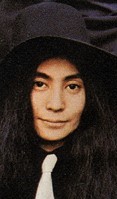 John impatiently asks, “Are you going to teach us this?” George then complies by teaching Paul and John the chords. However, John loses interest and decides to dance the waltz with Yoko while the remaining Beatles rehearse the song extensively. Instead of taking offense, George was amused by their dance routine and suggested that this be John's contribution to the song for their upcoming performance, since what Lennon could contribute instrumentally wouldn't really be needed anyway. John impatiently asks, “Are you going to teach us this?” George then complies by teaching Paul and John the chords. However, John loses interest and decides to dance the waltz with Yoko while the remaining Beatles rehearse the song extensively. Instead of taking offense, George was amused by their dance routine and suggested that this be John's contribution to the song for their upcoming performance, since what Lennon could contribute instrumentally wouldn't really be needed anyway.
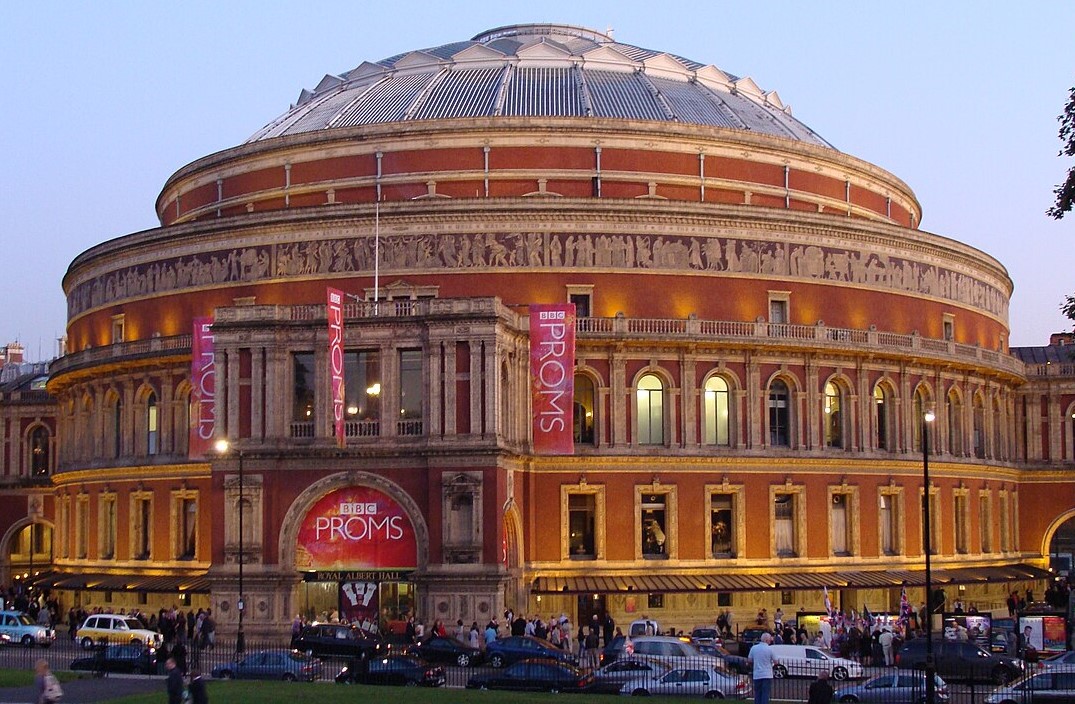 George asked John, “Do you want to do that on the show? That'd be great, 'cause it's so simple to do, the tune. But to do that waltz, or something, if you want to bag it up a bit.” Paul finds this humorous and, imitating a fictional Master Of Ceremonies for the event, accounces, “John and Yoko would like to waltz in their white bag!” adding, in his own voice, “and there's a white bag dancing around.” In Paul's MC voice he states “They were doing things inside it!” Paul adds, “We should do it as an escapologist thing, and we put the bag over them” the fictional MC voice announcing, “You can see they're not tied at all! There's nothing up their sleeves!” These comments were in acknowledgement of John and Yoko's recent December 18th, 1968 participation in "Celebration In December: A Community Benefit" put on by the Arts Lab at London's Royal Albert Hall. This was the couple's first public "Bagism" appearance entitled "Alchemical Wedding" where they were featured in a large white bag on stage for 30 minutes while a man played a flute. George asked John, “Do you want to do that on the show? That'd be great, 'cause it's so simple to do, the tune. But to do that waltz, or something, if you want to bag it up a bit.” Paul finds this humorous and, imitating a fictional Master Of Ceremonies for the event, accounces, “John and Yoko would like to waltz in their white bag!” adding, in his own voice, “and there's a white bag dancing around.” In Paul's MC voice he states “They were doing things inside it!” Paul adds, “We should do it as an escapologist thing, and we put the bag over them” the fictional MC voice announcing, “You can see they're not tied at all! There's nothing up their sleeves!” These comments were in acknowledgement of John and Yoko's recent December 18th, 1968 participation in "Celebration In December: A Community Benefit" put on by the Arts Lab at London's Royal Albert Hall. This was the couple's first public "Bagism" appearance entitled "Alchemical Wedding" where they were featured in a large white bag on stage for 30 minutes while a man played a flute.
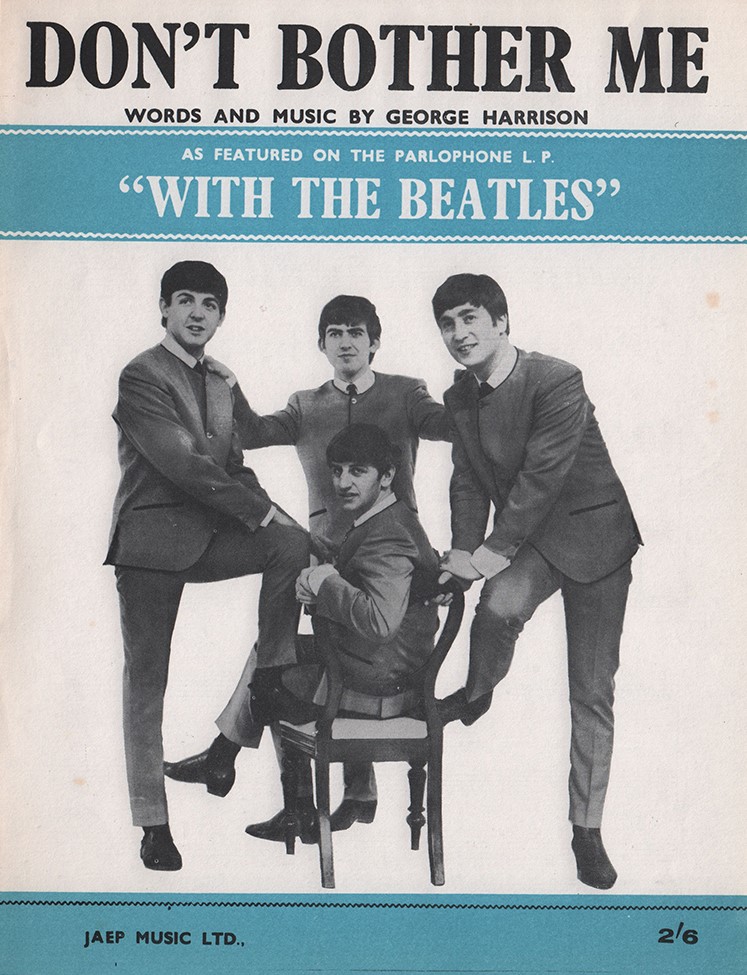 From this point on, The Beatles become quite animated in their excitement about developing “I Me Mine” for their proposed upcoming show, displaying a comaraderie unlike what most assume dominated the entire "Let It Be" project. George even suggested “castanets on that bit” where the flamenco-style guitar part was. All in all, The Beatles gave attention to the song at five different times on this day, putting in a total of 41 rehearsals, albeit many of them being incomplete runthroughs. One such rehearsal was included on some 2021 Anniversary editions of the "Let It Be" album, which begins with George inquiring about the sound he was hearing. "Is this on echo?" After George Martin confirms that it is, Paul states, "It's exciting; new developments!" and then references George's first Beatles composition "Don't Bother Me" just before the next rehearsal of "I Me Mine" begins. Meanwhile, John and Yoko's dance routine was seriously considered to be a part of the arrangement, waltzing rehearsals continuing to the point of Paul and George giving the pair dance instructions. “You'll spoil the spontaneity of the dance when you actually have to do it,” Paul comments about the frequency of their dance rehearsals. From this point on, The Beatles become quite animated in their excitement about developing “I Me Mine” for their proposed upcoming show, displaying a comaraderie unlike what most assume dominated the entire "Let It Be" project. George even suggested “castanets on that bit” where the flamenco-style guitar part was. All in all, The Beatles gave attention to the song at five different times on this day, putting in a total of 41 rehearsals, albeit many of them being incomplete runthroughs. One such rehearsal was included on some 2021 Anniversary editions of the "Let It Be" album, which begins with George inquiring about the sound he was hearing. "Is this on echo?" After George Martin confirms that it is, Paul states, "It's exciting; new developments!" and then references George's first Beatles composition "Don't Bother Me" just before the next rehearsal of "I Me Mine" begins. Meanwhile, John and Yoko's dance routine was seriously considered to be a part of the arrangement, waltzing rehearsals continuing to the point of Paul and George giving the pair dance instructions. “You'll spoil the spontaneity of the dance when you actually have to do it,” Paul comments about the frequency of their dance rehearsals.
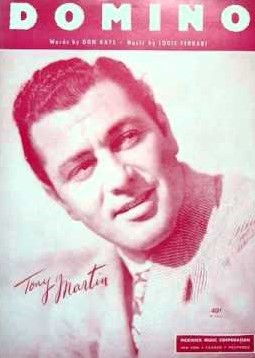 As they continue refining "I Me Mine" on this day, George stills wonders about the accuracy of his lyrics, asking: “Are you sure that's grammatic? Flowing more freely?” Michael Lindsay-Hogg assures him that it is. The flamenco-style guitar passage in the song reminds Paul of the old Tony Martin / Andy Williams hit “Domino,” which then becomes featured in the rehearsals on that day. As they continue refining "I Me Mine" on this day, George stills wonders about the accuracy of his lyrics, asking: “Are you sure that's grammatic? Flowing more freely?” Michael Lindsay-Hogg assures him that it is. The flamenco-style guitar passage in the song reminds Paul of the old Tony Martin / Andy Williams hit “Domino,” which then becomes featured in the rehearsals on that day.
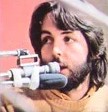 Also, during Paul's above-mentioned suggestion of inserting the heavy 12-bar blues progression in-between the verses of “I Me Mine,” he votes for the harmonies to sing as follows: “'My, my' is good to sing. It's like 'mm-mah, mm-mah.' 'I-I' is not...as easy to do...It's like 'nn-night' is easy to sing. 'Rr-right.' The 'mm-mah' is easy. It's like 'my-my-my' is easy to shout.” George, however, insists on “I-I-I-me-me-mine,” telling Paul that he can sing whatever he wants but, as the song's composer, Harrison wants what he wants. Paul acquiesced, the final rehearsal of the day featuring Paul's harmonies sung as George wanted, while John and Yoko waltzed away on the studio floor. A complete rendition of “I Me Mine,” this being an edit of two performances from the end of this day, appears in the released “Let It Be” movie. This is the final segment in the film featuring footage from the Twickenham Studios rehearsals, the remainder of the movie being filmed at their Apple building on Savile Row, London. Also, during Paul's above-mentioned suggestion of inserting the heavy 12-bar blues progression in-between the verses of “I Me Mine,” he votes for the harmonies to sing as follows: “'My, my' is good to sing. It's like 'mm-mah, mm-mah.' 'I-I' is not...as easy to do...It's like 'nn-night' is easy to sing. 'Rr-right.' The 'mm-mah' is easy. It's like 'my-my-my' is easy to shout.” George, however, insists on “I-I-I-me-me-mine,” telling Paul that he can sing whatever he wants but, as the song's composer, Harrison wants what he wants. Paul acquiesced, the final rehearsal of the day featuring Paul's harmonies sung as George wanted, while John and Yoko waltzed away on the studio floor. A complete rendition of “I Me Mine,” this being an edit of two performances from the end of this day, appears in the released “Let It Be” movie. This is the final segment in the film featuring footage from the Twickenham Studios rehearsals, the remainder of the movie being filmed at their Apple building on Savile Row, London.
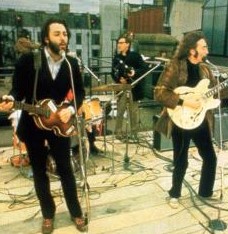 While The Beatles did discuss “I Me Mine” at later January rehearsals, they never touched it again in 1969. As the “musical” changed shape and evolved into the rooftop performance on January 30th, 1969, the proposed staged delivery of “I Me Mine,” with John and Yoko dancing, was understandably deemed inappropriate for the Apple rooftop show. However, director Michael Lindsay-Hogg loved the footage captured of John and Yoko dancing to the song at Twickenham Studios. “That's great,” he stated at the time. “It's beautiful. The whole thing should be very Brechtian...that very song has a character.” Therefore, he insisted that this footage would be a humorous highlight of the movie. While The Beatles did discuss “I Me Mine” at later January rehearsals, they never touched it again in 1969. As the “musical” changed shape and evolved into the rooftop performance on January 30th, 1969, the proposed staged delivery of “I Me Mine,” with John and Yoko dancing, was understandably deemed inappropriate for the Apple rooftop show. However, director Michael Lindsay-Hogg loved the footage captured of John and Yoko dancing to the song at Twickenham Studios. “That's great,” he stated at the time. “It's beautiful. The whole thing should be very Brechtian...that very song has a character.” Therefore, he insisted that this footage would be a humorous highlight of the movie.
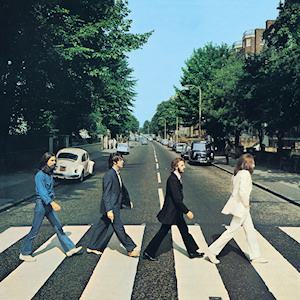 This being the case, it was decided that, since “I Me Mine” was going to be included in the film, it needed to be included on the soundtrack album as well. But since the song was not officially recorded on professional sound equipment, The Beatles needed to resurrect the song and record it properly at EMI Studios. However, the preparation and premier of the movie was delayed until the following year, well after their highly-successful “Abbey Road” album was released. And with John Lennon's announcement to his band-mates that he wanted "a divorce" from The Beatles, the future of the group was uncertain at that point. This being the case, it was decided that, since “I Me Mine” was going to be included in the film, it needed to be included on the soundtrack album as well. But since the song was not officially recorded on professional sound equipment, The Beatles needed to resurrect the song and record it properly at EMI Studios. However, the preparation and premier of the movie was delayed until the following year, well after their highly-successful “Abbey Road” album was released. And with John Lennon's announcement to his band-mates that he wanted "a divorce" from The Beatles, the future of the group was uncertain at that point.
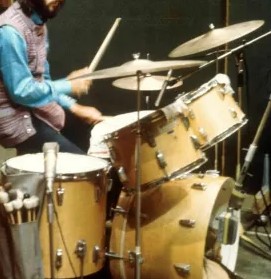 Nonetheless, on January 3rd, 1970, George, Paul and Ringo entered EMI Studio Two at 2:30 pm, their sole purpose for the day being the recording of “I Me Mine” from scratch. John was in Denmark enjoying a four-week vacation at the time, so the three Beatles took to recording the song themselves. This was fine, since John's only contribution to the development of the song thus far had been dancing the waltz, something that was unlikely to be picked up by microphones in the studio. Nonetheless, on January 3rd, 1970, George, Paul and Ringo entered EMI Studio Two at 2:30 pm, their sole purpose for the day being the recording of “I Me Mine” from scratch. John was in Denmark enjoying a four-week vacation at the time, so the three Beatles took to recording the song themselves. This was fine, since John's only contribution to the development of the song thus far had been dancing the waltz, something that was unlikely to be picked up by microphones in the studio.
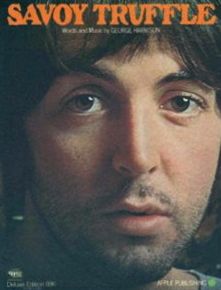 It is noteworthy to mention here that it was a full four-and-a-half months prior, on August 20th, 1969, that all four Beatles had last been together in EMI Studios, this being the date that the master tape banding and running-order for the “Abbey Road” album took place. It can probably be assumed also that, if John had been in town on January 3rd, 1970, his expressed intention to quit the band, along with his personal distaste for George's “I Me Mine,” would have kept him away anyway. His recent absence from the recording studio when George's songs were being recorded, such as in the case of "Here Comes The Sun," "Long, Long, Long" and "Savoy Truffle" to name a few, appears to indicate that this disinterest was a pattern. It is noteworthy to mention here that it was a full four-and-a-half months prior, on August 20th, 1969, that all four Beatles had last been together in EMI Studios, this being the date that the master tape banding and running-order for the “Abbey Road” album took place. It can probably be assumed also that, if John had been in town on January 3rd, 1970, his expressed intention to quit the band, along with his personal distaste for George's “I Me Mine,” would have kept him away anyway. His recent absence from the recording studio when George's songs were being recorded, such as in the case of "Here Comes The Sun," "Long, Long, Long" and "Savoy Truffle" to name a few, appears to indicate that this disinterest was a pattern.
 The three Beatles recorded sixteen takes of the rhythm track of the song, the instrumentation being Ringo on drums (tracks 1 and 2), Paul on his Hofner bass (track 3), George's acoustic guitar (track 4) and his guide vocal (track 7). It was decided by this point that the flamenco-style guitar part George originally envisioned for the song would be dropped entirely, Paul's 12-bar blues progression being used to seperate the two verses. The three Beatles recorded sixteen takes of the rhythm track of the song, the instrumentation being Ringo on drums (tracks 1 and 2), Paul on his Hofner bass (track 3), George's acoustic guitar (track 4) and his guide vocal (track 7). It was decided by this point that the flamenco-style guitar part George originally envisioned for the song would be dropped entirely, Paul's 12-bar blues progression being used to seperate the two verses.
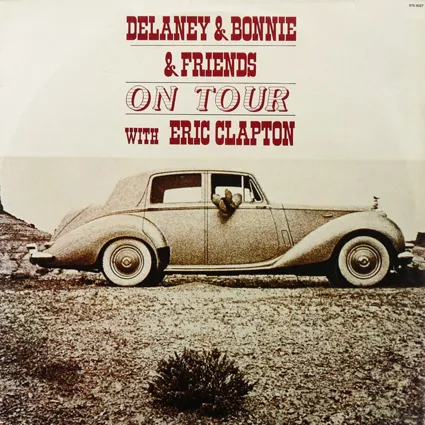 The session tapes reveal that the three of them were enjoying the session, this reunion being a welcome distraction for Paul and Ringo who both had been busying themselves recording solo albums in recent months. George had also kept busy by joining Eric Clapton as guest guitarists in Delaney and Bonnie's British tour, giving the soon-to-be ex-Beatle a musical outlet to clear his mind. After "take 10," Paul kept up his usual pattern of pushing for the perfect rhythm track by exclaiming "one more," "take 11" not commencing before they went through a brief snippet of The Everly Brothers' "Wake Up Little Suzie." After "take 11" is performed, as contained on various 2021 Anniversary editions of the "Let It Be" album, Paul states, "I think I can do one better than that." Before "take 12" begins, George leads them through a minor rendition of Buddy Holly's "Peggy Sue Got Married" as well as a slight reprise of the flamenco section of the song that was dropped from "I Me Mine." The session tapes reveal that the three of them were enjoying the session, this reunion being a welcome distraction for Paul and Ringo who both had been busying themselves recording solo albums in recent months. George had also kept busy by joining Eric Clapton as guest guitarists in Delaney and Bonnie's British tour, giving the soon-to-be ex-Beatle a musical outlet to clear his mind. After "take 10," Paul kept up his usual pattern of pushing for the perfect rhythm track by exclaiming "one more," "take 11" not commencing before they went through a brief snippet of The Everly Brothers' "Wake Up Little Suzie." After "take 11" is performed, as contained on various 2021 Anniversary editions of the "Let It Be" album, Paul states, "I think I can do one better than that." Before "take 12" begins, George leads them through a minor rendition of Buddy Holly's "Peggy Sue Got Married" as well as a slight reprise of the flamenco section of the song that was dropped from "I Me Mine."
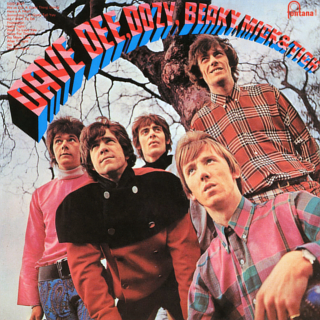 Evidence of their comaraderie on this day is in an announcement George made prior to the beginning of "take 15." In response to the September 1969 British press release that Dave Dee was splitting from the popular group “Dave Dee, Dozy, Beaky, Mick & Tich,” and in acknowledgment of John's absence on that day, George states: “You all will have read that Dave Dee is no longer with us. But Micky and Tich and I would just like to carry on the good work that's always gone down in (Studio) number two.” Paul then humorously replies, "What Dozy says goes for me and Tich!" Then, before "take 15" begins, George asks, "Alright, are you ready Ringo?" to which the drummer answers "Ready, George." This interchange, or parts thereof, are heard on both "Anthology 3" and some 2021 Anniversary editions of the "Let It Be" album. Evidence of their comaraderie on this day is in an announcement George made prior to the beginning of "take 15." In response to the September 1969 British press release that Dave Dee was splitting from the popular group “Dave Dee, Dozy, Beaky, Mick & Tich,” and in acknowledgment of John's absence on that day, George states: “You all will have read that Dave Dee is no longer with us. But Micky and Tich and I would just like to carry on the good work that's always gone down in (Studio) number two.” Paul then humorously replies, "What Dozy says goes for me and Tich!" Then, before "take 15" begins, George asks, "Alright, are you ready Ringo?" to which the drummer answers "Ready, George." This interchange, or parts thereof, are heard on both "Anthology 3" and some 2021 Anniversary editions of the "Let It Be" album.
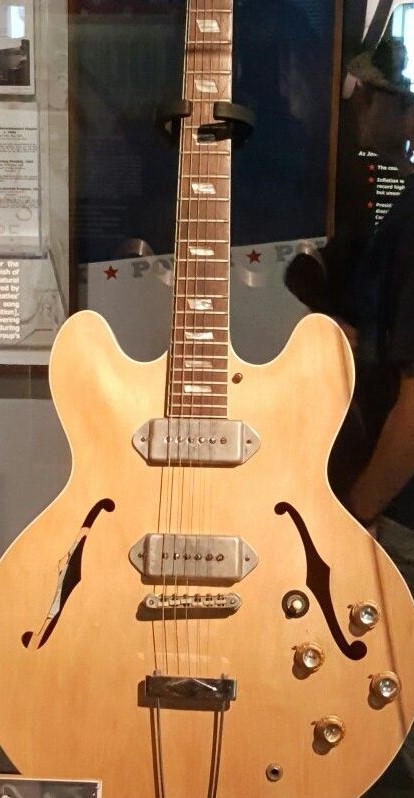 "Take 16," however, was deemed best, onto which the various overdubs were added. First off, Ringo's drums from tracks 1 and 2 were combined onto track 8, Paul recording an electric piano part onto track 1 and George recording an electric guitar part onto track 2. Onto track 5, George and Paul performed acoustic guitar licks simultaneously with George adding yet another lead guitar part in places where the acoustic guitars were not heard. Onto track 6, Paul performed an impressive Hammond organ part, while George's lead vocals were recorded onto track 7 along with Paul's harmony during the "I-I-I-me-me-mine" section (documented as the "bop piece"). One final overdub was performed on this day, this being George double-tracking his final lyric "All through your life, I me mine" onto track 2 where no lead guitar work was present. Interestingly, photographic evidence from this day shows George playing John's Epiphone Casino guitar in his absence, this quite possibly being the electric guitar used on this recording. The entire results of this day's session appear on “Anthology 3,” the song clocking in at a hefty 1:34 at this point. Even though official documentation shows this session ending at 12:15 am the following morning, Beatles' assistant Mal Evans wrote in his diary that they called it quits at 11:30 pm because the studio's eight-track machine began to "take up smoking." The three Beatles then went home to rest up for another recording session later that afternoon to add overdubs to the song “Let It Be.” "Take 16," however, was deemed best, onto which the various overdubs were added. First off, Ringo's drums from tracks 1 and 2 were combined onto track 8, Paul recording an electric piano part onto track 1 and George recording an electric guitar part onto track 2. Onto track 5, George and Paul performed acoustic guitar licks simultaneously with George adding yet another lead guitar part in places where the acoustic guitars were not heard. Onto track 6, Paul performed an impressive Hammond organ part, while George's lead vocals were recorded onto track 7 along with Paul's harmony during the "I-I-I-me-me-mine" section (documented as the "bop piece"). One final overdub was performed on this day, this being George double-tracking his final lyric "All through your life, I me mine" onto track 2 where no lead guitar work was present. Interestingly, photographic evidence from this day shows George playing John's Epiphone Casino guitar in his absence, this quite possibly being the electric guitar used on this recording. The entire results of this day's session appear on “Anthology 3,” the song clocking in at a hefty 1:34 at this point. Even though official documentation shows this session ending at 12:15 am the following morning, Beatles' assistant Mal Evans wrote in his diary that they called it quits at 11:30 pm because the studio's eight-track machine began to "take up smoking." The three Beatles then went home to rest up for another recording session later that afternoon to add overdubs to the song “Let It Be.”
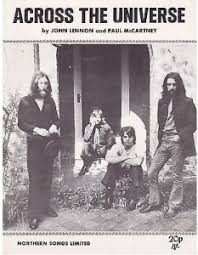 With producer Glyn Johns being given the task of assembling a soundtrack album for the soon-to-be-released “Let It Be” movie, he entered Studio One of Olympic Sound Studios in London on January 5th, 1970 to work on putting the album together. He had previously submitted an assembled album of this material for release in mid 1969, this being put on hold at that time. Now, with the knowledge that Twickenham footage of The Beatles rehearsing both “I Me Mine” and “Across The Universe” would appear in the film, and with “I Me Mine” recently being officially recorded by the group, his primary focus on this day was to create stereo mixes of these two additional songs. With producer Glyn Johns being given the task of assembling a soundtrack album for the soon-to-be-released “Let It Be” movie, he entered Studio One of Olympic Sound Studios in London on January 5th, 1970 to work on putting the album together. He had previously submitted an assembled album of this material for release in mid 1969, this being put on hold at that time. Now, with the knowledge that Twickenham footage of The Beatles rehearsing both “I Me Mine” and “Across The Universe” would appear in the film, and with “I Me Mine” recently being officially recorded by the group, his primary focus on this day was to create stereo mixes of these two additional songs.
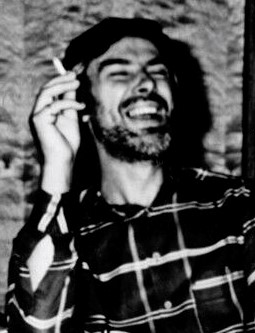 Only one stereo mix of “I Me Mine” was needed to be made by Glyn Johns for him to be satisfied. In keeping with the informal nature of the project, Glyn Johns included some studio sounds and chatter in this mix, Paul fooling around on bass and the brief dialog between George and Ringo (“Alright. Are you ready, Ringo?” “Ready, George”) from "take 15." Glyn, however, decided to omit track 2 of the eight-track tape from this mix, which silenced one of George's lead guitar tracks as well as his vocal double-tracking of the song's final lyric line. Since this mix was still just over one-and-a-half-minutes long, it fit in well onto side two of the proposed album, which included eight songs. As history reveals, this new compiling of the “Get Back” album, which apparently was considered as the title of the film at this point, was also rejected and/or put on hold for the time being. Nonetheless, two Olympic Sound Studios master tapes for this proposed album still exist in the Abbey Road Studios library, both being marked "KEEP, DO NOT SCRAP." These master tapes were eventually remastered and released, as we'll see below. Only one stereo mix of “I Me Mine” was needed to be made by Glyn Johns for him to be satisfied. In keeping with the informal nature of the project, Glyn Johns included some studio sounds and chatter in this mix, Paul fooling around on bass and the brief dialog between George and Ringo (“Alright. Are you ready, Ringo?” “Ready, George”) from "take 15." Glyn, however, decided to omit track 2 of the eight-track tape from this mix, which silenced one of George's lead guitar tracks as well as his vocal double-tracking of the song's final lyric line. Since this mix was still just over one-and-a-half-minutes long, it fit in well onto side two of the proposed album, which included eight songs. As history reveals, this new compiling of the “Get Back” album, which apparently was considered as the title of the film at this point, was also rejected and/or put on hold for the time being. Nonetheless, two Olympic Sound Studios master tapes for this proposed album still exist in the Abbey Road Studios library, both being marked "KEEP, DO NOT SCRAP." These master tapes were eventually remastered and released, as we'll see below.
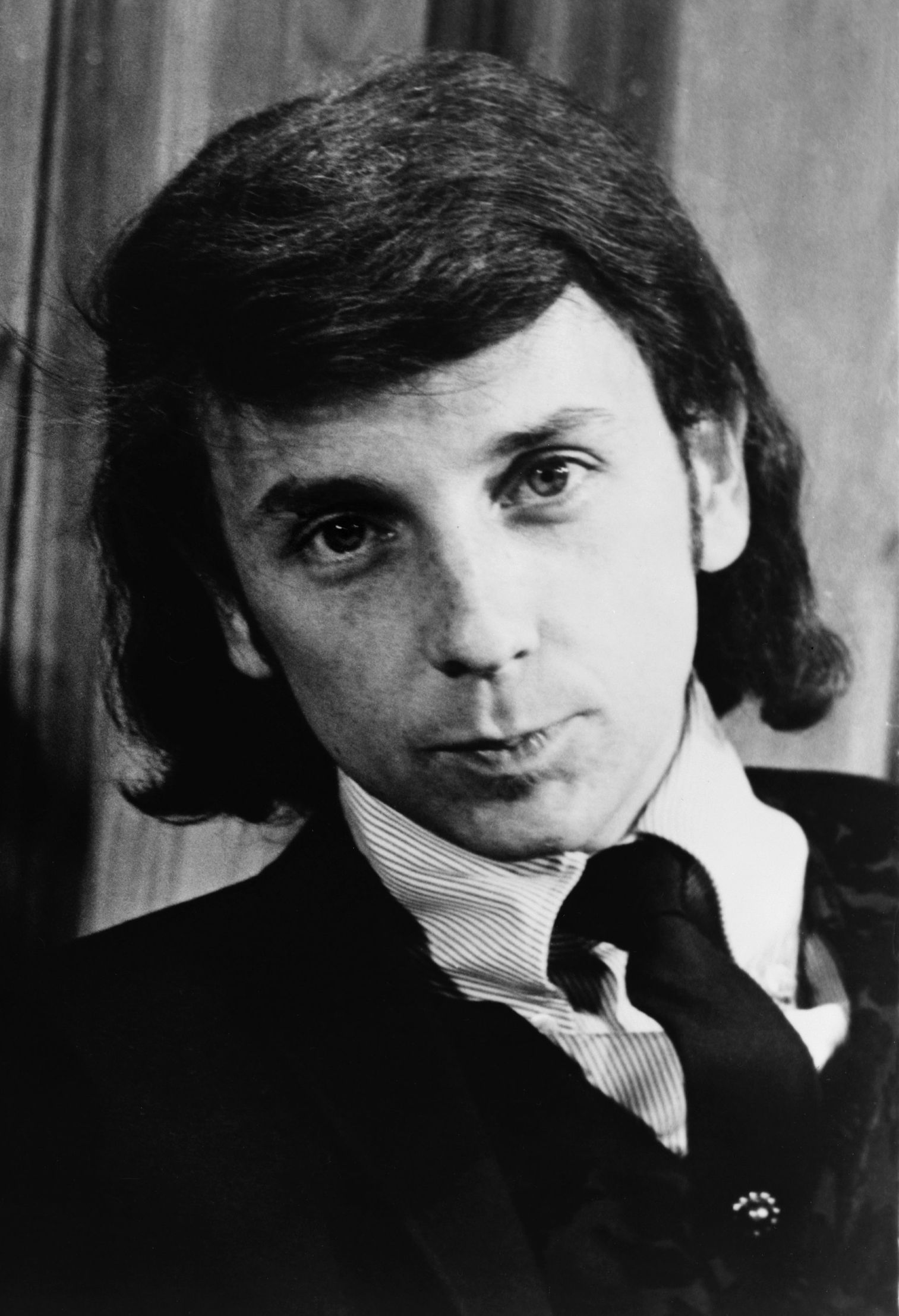 Because of John and George's recent acquaintance with Phil Spector, the legendary producer was hired to sort through all of the session tapes of the project and put together the film's soundtrack album, the entire project now being titled “Let It Be.” The first attention he gave to “I Me Mine” was on March 23rd, 1970, in Room 4 of EMI Studios. “George Harrison was here most of the time, watching,” engineer Peter Bown recalles, adding, “George and I got on like a house on fire. We got the remixes done to the satisfaction of those concerned.” Preliminary stereo mixes of many of the “Let It Be” songs were done on this day by Spector, Peter Bown and engineer Roger Ferris, although the three mixes and editing of “I Me Mine” were to be improved upon at a later date. Because of John and George's recent acquaintance with Phil Spector, the legendary producer was hired to sort through all of the session tapes of the project and put together the film's soundtrack album, the entire project now being titled “Let It Be.” The first attention he gave to “I Me Mine” was on March 23rd, 1970, in Room 4 of EMI Studios. “George Harrison was here most of the time, watching,” engineer Peter Bown recalles, adding, “George and I got on like a house on fire. We got the remixes done to the satisfaction of those concerned.” Preliminary stereo mixes of many of the “Let It Be” songs were done on this day by Spector, Peter Bown and engineer Roger Ferris, although the three mixes and editing of “I Me Mine” were to be improved upon at a later date.
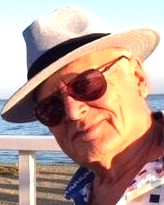 This later date was April 1st, 1970, Phil Spector booking fifty studio musicians and vocalists to overdub orchestral arrangements, prepared and conducted by Richard Hewson, onto three “Let It Be” songs, “I Me Mine” being one of them. The session began at 7 pm, the musicians setting up in the large EMI Studio One and the engineering staff convening in the control room of Studio Two. Ringo was also set up in Studio One to provide additional drums on the three songs. This later date was April 1st, 1970, Phil Spector booking fifty studio musicians and vocalists to overdub orchestral arrangements, prepared and conducted by Richard Hewson, onto three “Let It Be” songs, “I Me Mine” being one of them. The session began at 7 pm, the musicians setting up in the large EMI Studio One and the engineering staff convening in the control room of Studio Two. Ringo was also set up in Studio One to provide additional drums on the three songs.
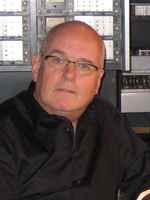 After extensive work on “Across The Universe” and “The Long And Winding Road” was complete, Phil Spector and engineers Peter Bown and Richard Lush made two attempts at creating a tape reduction extended edit of the 1:34 long "take 16" of “I Me Mine” to extend The Beatles' recording to a more palatable length. These two edit attempts were designated as "take 17" and "take 18," this second attempt being viewed as the best and ready for the orchestral overdub. Toward the conclusion of the song, at the 1:21 mark just after the lyric “flowing more freely than wine,” Spector spooled back the master tape to the :31 mark for the concluding segment of the first verse just before the lyric “all through the day.” He then let the rest of the song play out normally, this resulting in hearing the 12-bar blues progression twice and transforming the song from containing two verses to three. This extended the song to 2:25, a perfect match for the orchestral score prepared for this day. After extensive work on “Across The Universe” and “The Long And Winding Road” was complete, Phil Spector and engineers Peter Bown and Richard Lush made two attempts at creating a tape reduction extended edit of the 1:34 long "take 16" of “I Me Mine” to extend The Beatles' recording to a more palatable length. These two edit attempts were designated as "take 17" and "take 18," this second attempt being viewed as the best and ready for the orchestral overdub. Toward the conclusion of the song, at the 1:21 mark just after the lyric “flowing more freely than wine,” Spector spooled back the master tape to the :31 mark for the concluding segment of the first verse just before the lyric “all through the day.” He then let the rest of the song play out normally, this resulting in hearing the 12-bar blues progression twice and transforming the song from containing two verses to three. This extended the song to 2:25, a perfect match for the orchestral score prepared for this day.
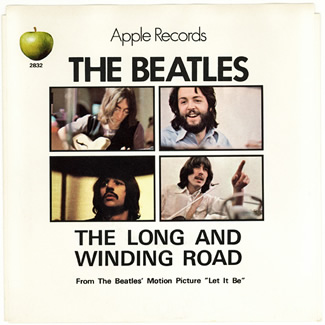 After the choir and acoustic guitarists that were used on “Across The Universe” and “The Long And Winding Road” were dismissed for the day, Ringo and the orchestral musicians were readied for their overdub onto “I Me Mine.” Brian Gibson, who was the technical engineer, recalls how difficult it was working with Phil Spector on this day. “He wanted to hear it, while it was being recorded, exactly the way it would sound when finished: with all the tape echo, plate echo, chamber echo, all the effects. This was horrendously difficult in Studio One which is, technically, quite primitive. Spector was at the point of throwing a big wobbly – 'I wanna hear this,' 'I wanna hear that,' 'I must have this,' 'I must have that!' - when Ringo took him quietly aside and said, 'Look, they can't do that, they're doing the best they can. Just cool it.' Ringo didn't need to do that but I think he could see that Spector was getting towards the end of his tether and was giving everybody a hard time. He wanted everyone to know who he was, he liked to assert himself.” After the choir and acoustic guitarists that were used on “Across The Universe” and “The Long And Winding Road” were dismissed for the day, Ringo and the orchestral musicians were readied for their overdub onto “I Me Mine.” Brian Gibson, who was the technical engineer, recalls how difficult it was working with Phil Spector on this day. “He wanted to hear it, while it was being recorded, exactly the way it would sound when finished: with all the tape echo, plate echo, chamber echo, all the effects. This was horrendously difficult in Studio One which is, technically, quite primitive. Spector was at the point of throwing a big wobbly – 'I wanna hear this,' 'I wanna hear that,' 'I must have this,' 'I must have that!' - when Ringo took him quietly aside and said, 'Look, they can't do that, they're doing the best they can. Just cool it.' Ringo didn't need to do that but I think he could see that Spector was getting towards the end of his tether and was giving everybody a hard time. He wanted everyone to know who he was, he liked to assert himself.”
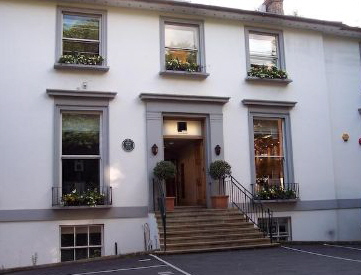 Before recording began, a reduction mix was made to another tape, which opened up track 4 for the brass and Ringo's new drums to be recorded, and track 6 for the strings, choir and harp to be recorded. This session wasn't complete until well after midnight, the final mixing being left for the following day, April 2nd, 1970. On this day, which was once again held in Room 4 of EMI Studios, Phil Spector and engineers Peter Bown and Roger Ferris made three attempts at creating a stereo mix of "take 18" of “I Me Mine,” designated as remixes 10 through 12. The orchestral overdubs were kept lower in these mixes, wisely allowing The Beatles' instruments and vocals to be the primary focus. Sections of remix 11 and 12 were then edited together to form the completed version of the song for release. Before recording began, a reduction mix was made to another tape, which opened up track 4 for the brass and Ringo's new drums to be recorded, and track 6 for the strings, choir and harp to be recorded. This session wasn't complete until well after midnight, the final mixing being left for the following day, April 2nd, 1970. On this day, which was once again held in Room 4 of EMI Studios, Phil Spector and engineers Peter Bown and Roger Ferris made three attempts at creating a stereo mix of "take 18" of “I Me Mine,” designated as remixes 10 through 12. The orchestral overdubs were kept lower in these mixes, wisely allowing The Beatles' instruments and vocals to be the primary focus. Sections of remix 11 and 12 were then edited together to form the completed version of the song for release.
 Sometime in 1996, George Martin and Geoff Emerick returned to "take 16" of “I Me Mine” as recorded on January 3rd, 1970, to create a new stereo mix for inclusion on “Anthology 3.” They presented the song with all of its overdubs from that day only, allowing listeners to enjoy the song as The Beatles recorded it minus all orchestration. George Martin also kept it at its original 1:34 length but thought to include George Harrison's “Dave Dee” introduction from "take 15" for posterity. Sometime in 1996, George Martin and Geoff Emerick returned to "take 16" of “I Me Mine” as recorded on January 3rd, 1970, to create a new stereo mix for inclusion on “Anthology 3.” They presented the song with all of its overdubs from that day only, allowing listeners to enjoy the song as The Beatles recorded it minus all orchestration. George Martin also kept it at its original 1:34 length but thought to include George Harrison's “Dave Dee” introduction from "take 15" for posterity.
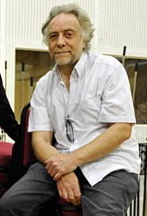 Then in 2003, the engineering team of Paul Hicks, Guy Massey and Allan Rouse entered Abbey Road Studios to create yet another mix of “I Me Mine” from the original "take 16" for inclusion on the album “Let It Be...Naked.” Being commissioned by Paul to present the album without the orchestration and choirs of the original 1970 album, the “naked” recording of this song is included on this release as it was on "Anthology 3." However, Phil Spector's idea of extending the song to a longer length was repeated here, but with some notable differences. The edit in the second verse comes after George sings “all through your life,” Phil Spector's original edit preceding this line so as to include the lyric “all through the day” from the first verse. Also, the overdubbed organ and lead guitars are mixed differently in each of the two 12-bar blues progressions so as to create the illusion of these being different performances. Then in 2003, the engineering team of Paul Hicks, Guy Massey and Allan Rouse entered Abbey Road Studios to create yet another mix of “I Me Mine” from the original "take 16" for inclusion on the album “Let It Be...Naked.” Being commissioned by Paul to present the album without the orchestration and choirs of the original 1970 album, the “naked” recording of this song is included on this release as it was on "Anthology 3." However, Phil Spector's idea of extending the song to a longer length was repeated here, but with some notable differences. The edit in the second verse comes after George sings “all through your life,” Phil Spector's original edit preceding this line so as to include the lyric “all through the day” from the first verse. Also, the overdubbed organ and lead guitars are mixed differently in each of the two 12-bar blues progressions so as to create the illusion of these being different performances.
 Sometime in 2021, Giles Martin and engineer Sam Okell returned to the master tapes of "I Me Mine" to create a new mix for inclusion on an Anniversary version of the "Let It Be" album available in various editions. They also created two additional mixes of the song, the first being a mono rehearsal at Twickenham Film Studios recorded on January 8th, 1969, and the second being the instrumental rhythm track "take 11" as recorded at EMI Studios on January 3rd, 1970 (tacking on the "Dave Dee" introduction from George that introduced "take 15"). The unedited Glyn Johns mix from January 5th, 1970 as included on the proposed "Get Back" album from 1970 was also remastered at this time. Sometime in 2021, Giles Martin and engineer Sam Okell returned to the master tapes of "I Me Mine" to create a new mix for inclusion on an Anniversary version of the "Let It Be" album available in various editions. They also created two additional mixes of the song, the first being a mono rehearsal at Twickenham Film Studios recorded on January 8th, 1969, and the second being the instrumental rhythm track "take 11" as recorded at EMI Studios on January 3rd, 1970 (tacking on the "Dave Dee" introduction from George that introduced "take 15"). The unedited Glyn Johns mix from January 5th, 1970 as included on the proposed "Get Back" album from 1970 was also remastered at this time.
Song Structure and Style
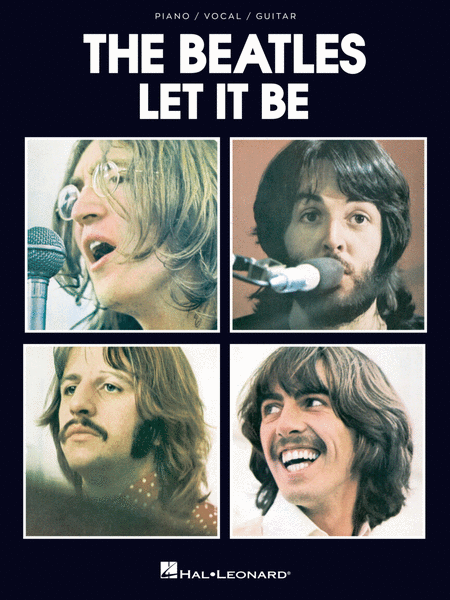 In our analysis of the most popular extended “Let It Be” version of “I Me Mine,” we see that it comes to us in the format of 'verse/ bridge/ verse/ bridge/ verse' (or ababa) with a simple three measure introduction based on the chords of the verse. The verses are entirely in 6/8 time while the bridges are in a shuffle 4/4 beat. In our analysis of the most popular extended “Let It Be” version of “I Me Mine,” we see that it comes to us in the format of 'verse/ bridge/ verse/ bridge/ verse' (or ababa) with a simple three measure introduction based on the chords of the verse. The verses are entirely in 6/8 time while the bridges are in a shuffle 4/4 beat.
The main focus of the three-measure intro is the overdubbed dual electric guitar leads, each playing totally different passages that work well together. Paul's organ is also prominent in this section, its rotating Leslie speaker especially being heard in the third measure. In the far background one can faintly hear the rhythm track that comprises George's acoustic guitar strums and Paul's bass.
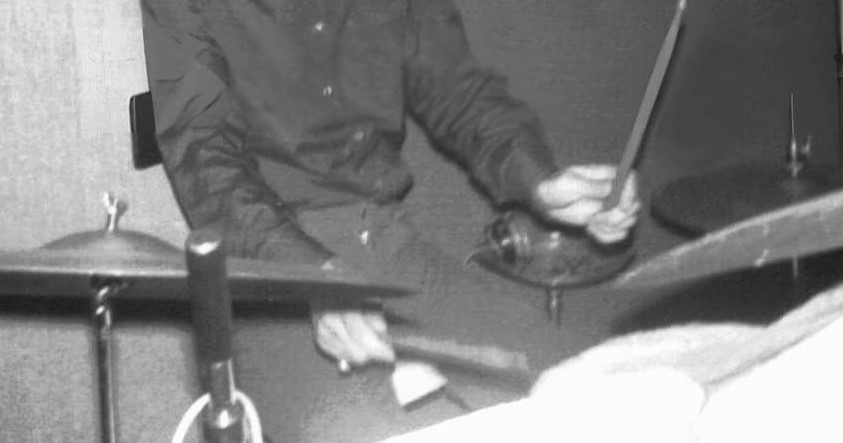 The first verse comes next, which is an even sixteen measures long. Ringo's drums kick in here for the first time on the downbeat of the first measure, the final note of a guitar lead and Leslie-effected organ chord from the intro ringing out in the background. With light strings playing in the background, Ringo plays a somewhat heavy 6/8 drum pattern riding on the hi-hat throughout the first eight measures. George's single-tracked lead vocals also arrive on the downbeat of the first measure while the organ dissapates by the second measure. The first verse comes next, which is an even sixteen measures long. Ringo's drums kick in here for the first time on the downbeat of the first measure, the final note of a guitar lead and Leslie-effected organ chord from the intro ringing out in the background. With light strings playing in the background, Ringo plays a somewhat heavy 6/8 drum pattern riding on the hi-hat throughout the first eight measures. George's single-tracked lead vocals also arrive on the downbeat of the first measure while the organ dissapates by the second measure.
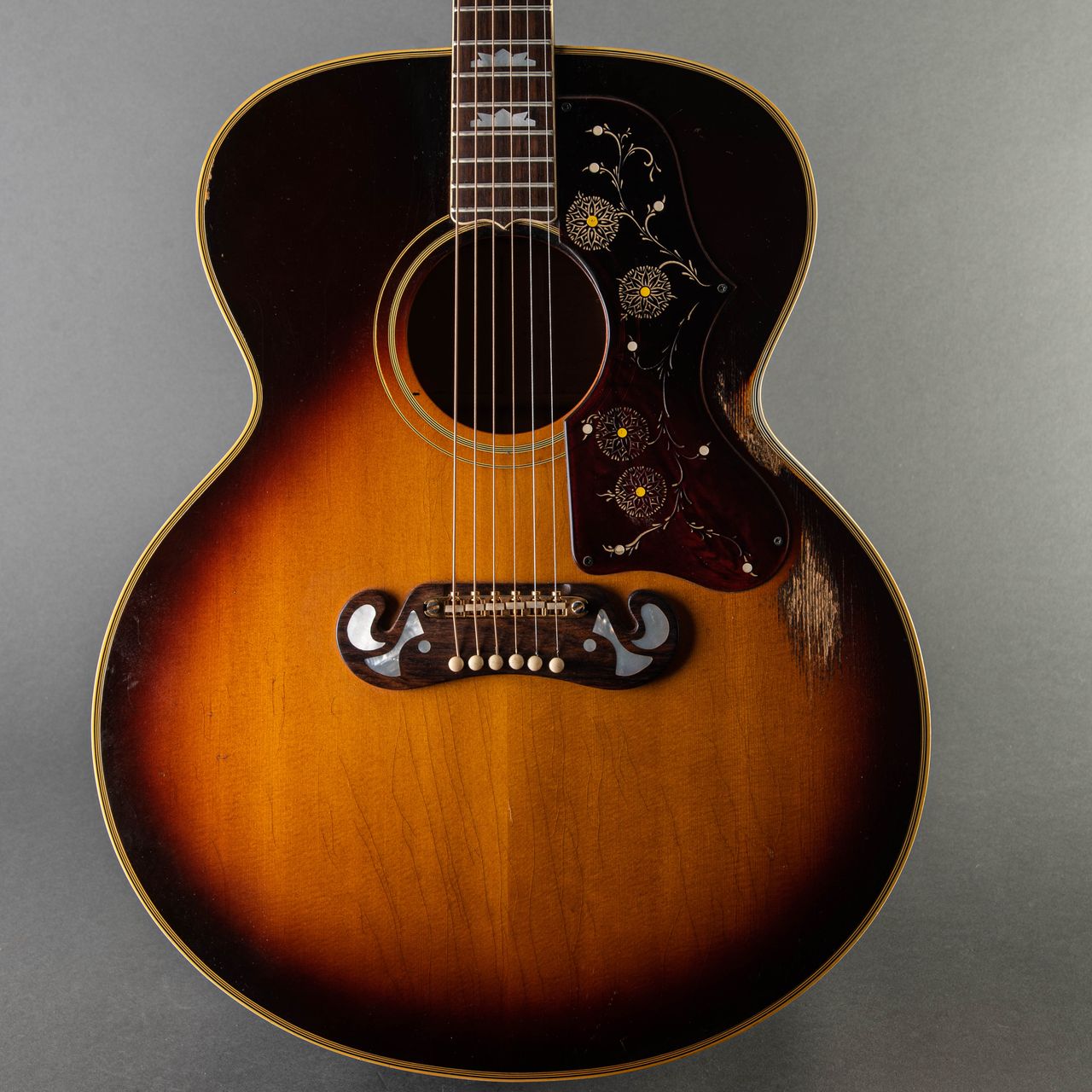 An effective dual acoustic guitar line from George and Paul is heard in the third and seventh measures of the first verse, while a simple electric guitar line appears in the third measure. Paul's bass continues throughout the verse in a somewhat subdued by appropriate fashion, while the strings swell dramatically in the ninth through twelfth measures and trail off in measures thirteen through sixteen. Paul plays staccato organ chords in the ninth through twelfth measures as well. Ringo focuses mostly on his toms during measures nine through twelve, returning to the heavy 6/8 pattern in measures thirteen and fourteen, and then transforming into a shuffle pattern using the ride cymbal in measure fifteen that moves into a transitional shuffle snare drum fill in measure sixteen. An effective dual acoustic guitar line from George and Paul is heard in the third and seventh measures of the first verse, while a simple electric guitar line appears in the third measure. Paul's bass continues throughout the verse in a somewhat subdued by appropriate fashion, while the strings swell dramatically in the ninth through twelfth measures and trail off in measures thirteen through sixteen. Paul plays staccato organ chords in the ninth through twelfth measures as well. Ringo focuses mostly on his toms during measures nine through twelve, returning to the heavy 6/8 pattern in measures thirteen and fourteen, and then transforming into a shuffle pattern using the ride cymbal in measure fifteen that moves into a transitional shuffle snare drum fill in measure sixteen.
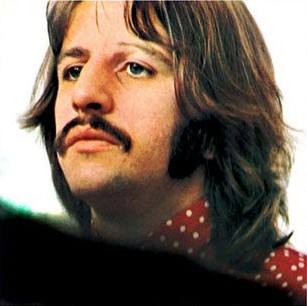 The bridge that follows is actually ten measures long (cutting short the 12-bar blues pattern it suggests) and transforms the minor key of the verses into a major key. With George and Paul harmonizing “I – I – I- me – me – mine” in measures one through eight, Ringo shows himself in top form by playing a hard-driving blues / rock pattern, alternating snare / hi-hat fills in measures two and six with rolling tom fills in measures four and eight. George puts in an incredible performance on lead guitar as well, rocking out on measures two, four, six and eight, the last one extending into measures nine and ten also, this rounding out the bridge very nicely. The bridge that follows is actually ten measures long (cutting short the 12-bar blues pattern it suggests) and transforms the minor key of the verses into a major key. With George and Paul harmonizing “I – I – I- me – me – mine” in measures one through eight, Ringo shows himself in top form by playing a hard-driving blues / rock pattern, alternating snare / hi-hat fills in measures two and six with rolling tom fills in measures four and eight. George puts in an incredible performance on lead guitar as well, rocking out on measures two, four, six and eight, the last one extending into measures nine and ten also, this rounding out the bridge very nicely.
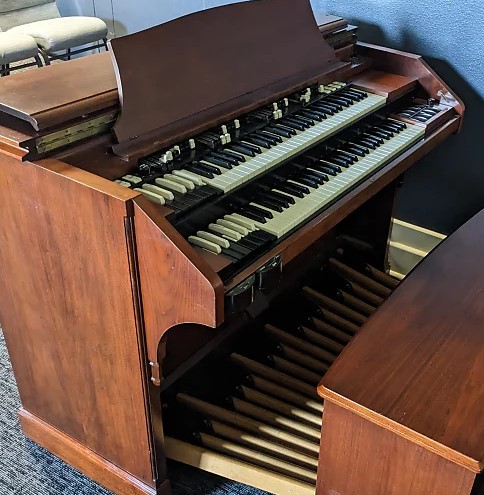 Paul plays a walking pattern on bass during the bridge while pushing the limits on Hammond organ throughout. He accentuates the empty spaces left between the vocal harmonies with keyboard runs and then takes center stage in measures nine and ten, finalizing the last measure with a glissando up and down the organ in a way that would make you think Billy Preston was playing a guest spot. With George's final lead guitar line ringing out, Ringo brings back the 6/8 time-signature in measure ten with an appropriate triplet drum fill. Phil Spector appropriately gives the orchestra a break during the bridge to accentuate this amazing Beatles performance. Paul plays a walking pattern on bass during the bridge while pushing the limits on Hammond organ throughout. He accentuates the empty spaces left between the vocal harmonies with keyboard runs and then takes center stage in measures nine and ten, finalizing the last measure with a glissando up and down the organ in a way that would make you think Billy Preston was playing a guest spot. With George's final lead guitar line ringing out, Ringo brings back the 6/8 time-signature in measure ten with an appropriate triplet drum fill. Phil Spector appropriately gives the orchestra a break during the bridge to accentuate this amazing Beatles performance.
 The second verse brings back the minor key of the song and continues with the same instrumentation as the first verse, the only exception being a different orchestral arrangement that now incorporates brass. After the edit at the beginning of the thirteenth measure, we are then taken back to the thirteenth measure of verse one, the only difference here being a slight change in the orchestral performance that includes a final wavering note by the brass in measures fifteen and sixteen. The second verse brings back the minor key of the song and continues with the same instrumentation as the first verse, the only exception being a different orchestral arrangement that now incorporates brass. After the edit at the beginning of the thirteenth measure, we are then taken back to the thirteenth measure of verse one, the only difference here being a slight change in the orchestral performance that includes a final wavering note by the brass in measures fifteen and sixteen.
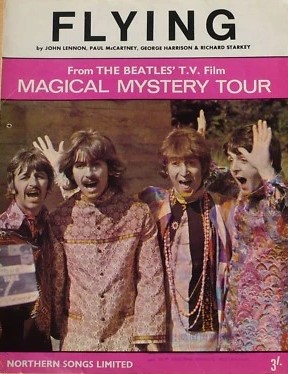 After an identical repeat of the bridge, the third verse appears again with a different orchestral performance than we heard it with the previous time. Phil Spector then allows the full second verse to play out, culminating in the brass coming to the fore during George's final double-tracked lyric “all through your life, I me mine...” which then hangs in the air as all instrumentaion gradually fades away. Paul's final organ chord pulses twice during the final moments of the song, which adds a slightly hypnotic touch reminiscent of what's heard at the end of "Flying." After an identical repeat of the bridge, the third verse appears again with a different orchestral performance than we heard it with the previous time. Phil Spector then allows the full second verse to play out, culminating in the brass coming to the fore during George's final double-tracked lyric “all through your life, I me mine...” which then hangs in the air as all instrumentaion gradually fades away. Paul's final organ chord pulses twice during the final moments of the song, which adds a slightly hypnotic touch reminiscent of what's heard at the end of "Flying."
American Releases
The first and primary release of “I Me Mine” was on the “Let It Be” soundtrack album, which came out in the US on May 18th, 1970. It was distributed in a gate-fold jacket in America, as opposed to the box set with photo book that was released in the UK. It spent four weeks in the top spot of the Billboard album chart and has sold well over four million copies in America alone.
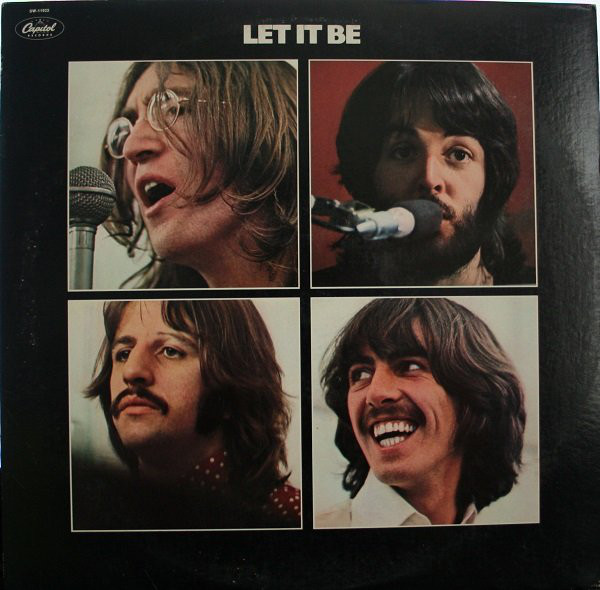 Despite having a red Apple Records label, "Let It Be" was distributed by United Artists Records upon initial release, although it eventually was dropped by the the label's roster a few years later. While Capitol kept all other US Beatles albums in print throughout the '70s, “Let It Be” was the only LP from the group that wasn't legitimately available for a number of years. This was rectified in 1978, however, when Capitol Records purchased the UA catalog and rereleased the “Let It Be” album once again, this time in a standard single sleeve cover. The album first appeared on compact disc on October 10th, 1987, and then as a remastered CD on September 9th, 2009. A newly mixed vinyl and CD edition of the album was then released on October 15th, 2021, as well as a special edition picture disc. Despite having a red Apple Records label, "Let It Be" was distributed by United Artists Records upon initial release, although it eventually was dropped by the the label's roster a few years later. While Capitol kept all other US Beatles albums in print throughout the '70s, “Let It Be” was the only LP from the group that wasn't legitimately available for a number of years. This was rectified in 1978, however, when Capitol Records purchased the UA catalog and rereleased the “Let It Be” album once again, this time in a standard single sleeve cover. The album first appeared on compact disc on October 10th, 1987, and then as a remastered CD on September 9th, 2009. A newly mixed vinyl and CD edition of the album was then released on October 15th, 2021, as well as a special edition picture disc.
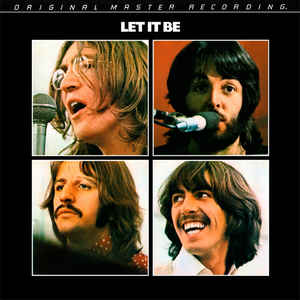 In November of 1986, the “Let It Be” soundtrack album was also made available as an “Original Master Recording” release by Mobile Fidelity Sound Lab. Their practice was to prepare a new master utilizing half-speed mastering technology from the original master tapes, in this case using what was referred to therein as a “corrected copy tape.” The album was issued in both a single sleeve and gatefold cover, the single sleeve cover being the rarest. In November of 1986, the “Let It Be” soundtrack album was also made available as an “Original Master Recording” release by Mobile Fidelity Sound Lab. Their practice was to prepare a new master utilizing half-speed mastering technology from the original master tapes, in this case using what was referred to therein as a “corrected copy tape.” The album was issued in both a single sleeve and gatefold cover, the single sleeve cover being the rarest.
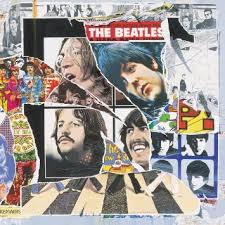 The version of “I Me Mine” that George, Paul and Ringo recorded on January 3rd, 1970 was released on the compilation album “Anthology 3” on October 28th, 1996. This version, as described above, is at its original 1:34 length and omits all of the orchestration that was overdubbed on April 1st, 1970, George's “Dave Dee” announcement from "take 15" being tacked onto the beginning of this track. The version of “I Me Mine” that George, Paul and Ringo recorded on January 3rd, 1970 was released on the compilation album “Anthology 3” on October 28th, 1996. This version, as described above, is at its original 1:34 length and omits all of the orchestration that was overdubbed on April 1st, 1970, George's “Dave Dee” announcement from "take 15" being tacked onto the beginning of this track.
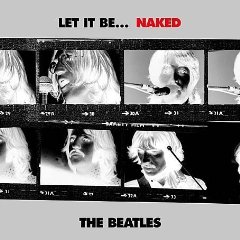 November 17th, 2003, was the release date for “Let It Be...Naked,” a project that was propsed by Paul McCartney to strip away Phil Spector's orchestration and present the material as The Beatles intended. The January 3rd, 1970 recording of “I Me Mine,” with Beatles overdubs only, appears here, new editing and mixing from the engineering team extending the song to 2:21 to simulate Phil Spector's original release. November 17th, 2003, was the release date for “Let It Be...Naked,” a project that was propsed by Paul McCartney to strip away Phil Spector's orchestration and present the material as The Beatles intended. The January 3rd, 1970 recording of “I Me Mine,” with Beatles overdubs only, appears here, new editing and mixing from the engineering team extending the song to 2:21 to simulate Phil Spector's original release.
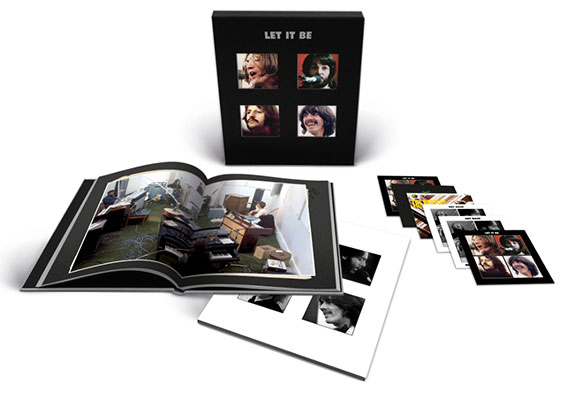 On October 15th, 2021, various editions of the "Let It Be" album were released that feature interesting versions of "I Me Mine." The "Deluxe" 2CD set features the newly remixed Giles Martin version of the song as well as "take 11" as recorded on January 3rd, 1970, while both the "Super Deluxe" 5CD + Blu-ray edition and the "Super Deluxe" 4LP + 1 12" EP edition also contain a rehearsal of "I Me Mine" at Twickenham Studios on January 8th, 1969. On October 15th, 2021, various editions of the "Let It Be" album were released that feature interesting versions of "I Me Mine." The "Deluxe" 2CD set features the newly remixed Giles Martin version of the song as well as "take 11" as recorded on January 3rd, 1970, while both the "Super Deluxe" 5CD + Blu-ray edition and the "Super Deluxe" 4LP + 1 12" EP edition also contain a rehearsal of "I Me Mine" at Twickenham Studios on January 8th, 1969.
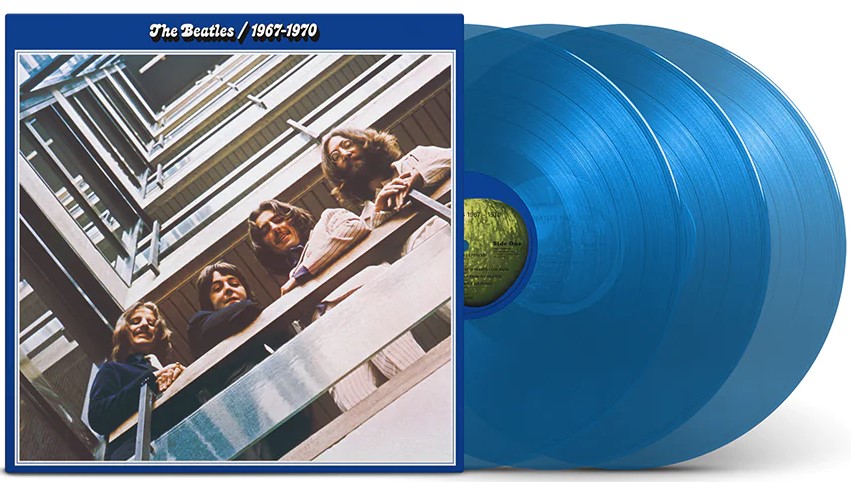 A 50th Anniversay edition of the compilation album "The Beatles / 1967 - 1970" (aka "The Blue Album") was released on November 10th, 2023. This expanded release included 12 additional songs for a total of 38 tracks, including the new mix of "I Me Mine" detailed above, and was made available as a double CD and as a triple vinyl release on both black and blue vinyl. A 50th Anniversay edition of the compilation album "The Beatles / 1967 - 1970" (aka "The Blue Album") was released on November 10th, 2023. This expanded release included 12 additional songs for a total of 38 tracks, including the new mix of "I Me Mine" detailed above, and was made available as a double CD and as a triple vinyl release on both black and blue vinyl.
Live Performances
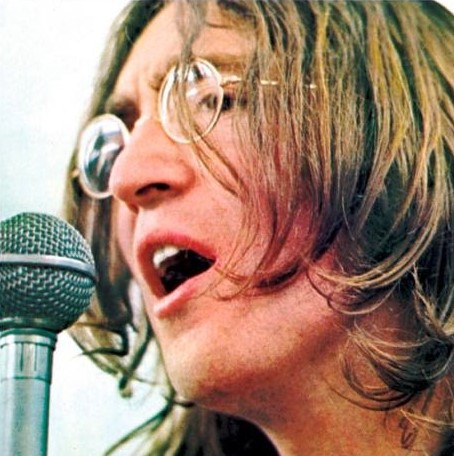 When George Harrison returned to The Beatles to see the “Let It Be” project to completion, it was one of his requirements that none of his compositions would be performed in their upcoming live show. This show ended up becoming the live rooftop performance on January 30th, 1969, “I Me Mine” not being among the songs played per George's instructions. One can only imagine how the song would have played out on the rooftop if they had gone through with their plan of having John and Yoko waltzing through the song! When George Harrison returned to The Beatles to see the “Let It Be” project to completion, it was one of his requirements that none of his compositions would be performed in their upcoming live show. This show ended up becoming the live rooftop performance on January 30th, 1969, “I Me Mine” not being among the songs played per George's instructions. One can only imagine how the song would have played out on the rooftop if they had gone through with their plan of having John and Yoko waltzing through the song!
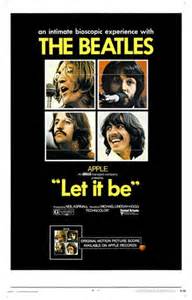 Nonetheless, as detailed above, their Twickenham rehearsals of “I Me Mine” did get an extended segment in the “Let It Be” movie. Director Michael Lindsay-Hogg was correct in thinking that, with John and Yoko dancing, this would be a humorous highlight of the film, the viewers assuming that this was a spontanious act that showed Lennon's disinterest in George's song. What movie-goers didn't know, however, is that the couple were actually practicing this routine for quite a while in preparation for this being performed live with The Beatles. Nonetheless, as detailed above, their Twickenham rehearsals of “I Me Mine” did get an extended segment in the “Let It Be” movie. Director Michael Lindsay-Hogg was correct in thinking that, with John and Yoko dancing, this would be a humorous highlight of the film, the viewers assuming that this was a spontanious act that showed Lennon's disinterest in George's song. What movie-goers didn't know, however, is that the couple were actually practicing this routine for quite a while in preparation for this being performed live with The Beatles.
Neither George, nor any of the other Beatles, thought to include “I Me Mine” in any of their post-Beatles solo tours or performances.
Conclusion
It should be noted that it was only because of Michael Lindsay-Hogg's insistence on featuring John and Yoko's “I Me Mine” dancing in the “Let It Be” film that the song came to be known by Beatles' fans at all. If it was left up to George, who annouced in late January that he didn't want to include any of his compositions in their final show, “I Me Mine” would never have gotten past the rehearsal stage and would never have been included on a Beatles album. Thanks to director Michael Lindsay-Hogg, this impressive George Harrison song was included in The Beatles' catalog.
Song Summary
“I Me Mine”
Written by: George Harrison
- Song Written: January 7, 1969
- Song Recorded: January 3, April 1, 1970
- First US Release Date: May 18, 1970
- First US Album Release: Apple #AR-34001 “Let It Be”
- British Album Release: Apple #PCS 7096 “Let It Be”
- US Single Release: n/a
- Highest Chart Position: n/a
- Length: 2:25
- Key: A minor
- Producer: George Martin, Phil Spector
- Engineers: Phil McDonald, Glyn Johns, Richard Langham, Peter Bown, Richard Lush
Instrumentation (most likely):
- George Harrison - Lead and Backing Vocals, Rhythm and Lead Guitar (1968 Gibson J-200), Lead Guitar (1965 Epiphone ES-230TD Casino)
- Paul McCartney - Bass (1964 Rickenbacker 4001 S), Electric Piano (1964 Hohner Pianet C), Organ (Hammond RT-3 w/ Leslie 145 cabinet), Acoustic Guitar (1967 Martin D-28), backing vocals
- Ringo Starr - Drums (1968 Ludwig Hollywood Maple)
- 18 musicians - violin
- 4 musicians - viola
- 4 musicians - cello
- 1 musician - harp
- 3 musicians - trumpet
- 3 musicians - trombones
Written and compiled by Dave Rybaczewski
|
IF YOU WOULD LIKE TO MAKE A DONATION TO KEEP THIS WEBSITE UP AND RUNNING, PLEASE CLICK BELOW!
Sign Up Below for our MONTHLY BEATLES TRIVIA QUIZ!
|